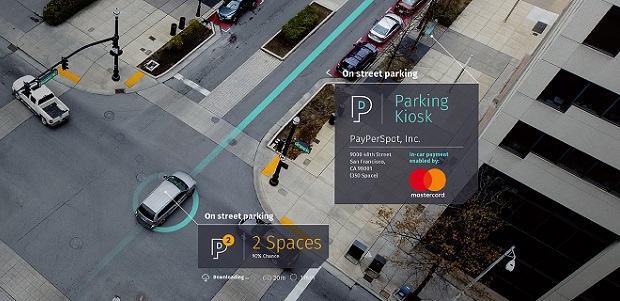
Mastercard and HERE Technologies announced an agreement to jointly create more connected experiences for people on the move. This partnership comes as people look to take advantage of new technologies to make purchases from the convenience of their car’s dashboard and interact with destinations in real-time.
Under the agreement, the two companies will build on their respective digital payment and mapping technologies to take friction out of an increasingly mobile world and shape the next generation of connected vehicle services. The programs and ideas will build on global standards and open APIs to enable a superior user journey at scale – from personalized discovery and choice through to secure check-out, and relevant loyalty rewards.
”The announcement complements the pioneering work Mastercard has done over the past five years, partnering with car manufacturers, travel companies, mass transit agencies and other mobility providers, enabling better, more connected experiences for residents and visitors traveling to and within global cities. As physical infrastructure is often reaching its limits, digital solutions can help anticipate and recommend certain scenarios, such as choosing the right mode of transportation at the right time.”, according to the press release.
Hany Fam, executive vice president, Enterprise Partnerships, Mastercard, commented: “With more users than ever moving between different places and devices, enterprises need to work more closely together to curate experiences that put people, not things, at the center. By combining our expertise and our reach, Mastercard and HERE Technologies have the opportunity to empower mobile lifestyles in the most secure, informed and inclusive way.”
Besides further advancing connected vehicle payments, additional use cases that may be explored include mobility-as-a-service (MaaS), demand management and location-based offerings. Solutions for these use cases will aim to leverage data analytics capabilities from both companies, including HERE’s Open Location Platform. Whether mobility and logistics providers, cities and tourism authorities, retail brands or financial institutions – all these players want to be able to serve up information that is most relevant to a given time, location and customer.
Angel Mendez, executive vice president and chief operating officer, HERE Technologies, said: “Location technology and digital payments are at the heart of how we access services in the physical world. Together they enable people, businesses and cities to deliver, and act on, valued information at the right time and location. We look forward to working with Mastercard on a wide-ranging innovation program that will help shape the personal experience of users across transportation modes and within smarter cities.”
Under the agreement, HERE will also join City Possible, an initiative to foster new forms of collaboration between the private and the public sector for more inclusive and more sustainable urban development.
HERE Technologies is backed by Audi, BMW, Daimler, Intel and Pioneer, with Bosch and Continental also poised to become shareholders in 2018.
Banking 4.0 – „how was the experience for you”
„To be honest I think that Sinaia, your conference, is much better then Davos.”
Many more interesting quotes in the video below: